https://www.microsoft.com/en-us/research/project/tuva-richard-feynman/#!1-physical-law
https://collegeinfogeek.com/feynman-technique/
https://www.levir.com.br/theosophy/MindAndMemoryTrainingEW-P2.htm
There’s a quote that’s often attributed to Albert Einstein which goes:
“If you can’t explain it simply, you don’t understand it well enough.”
Whether or not Einstein himself actually said this (it’s never been properly sourced, so it’s likely he didn’t), it’s still an insightful observation. It’s also one that yields a pretty powerful study tip when reversed:
If you want to understand something well, try to explain it simply.
By attempting to explain a concept in simple terms, you’ll quickly see where you have a good understanding of that concept. You’ll also be able to instantly pinpoint your problem areas, because they’ll be the areas where you either get stuck or where you end up resorting to using complex language and terminology.
This is the idea behind the Feynman Technique.
Named after the Nobel Prize-winning physicist – who, in addition to being a brilliant scientist, was also called “The Great Explainer” for his ability to relay complex ideas to others in simple, intuitive ways – the Feynman Technique is a method for learning or reviewing a concept quickly by explaining it in plain, simple language.
In addition to helping you pinpoint those problem areas in the concept you’re trying to learn, the Feynman Technique gives you a quick, efficient way to shore up those areas using targeted learning. It’s a simple technique, but it’ll help you study much more efficiently once you put into action.
So how do you actually use it?
How to Use the Feynman Technique
Since the root of this technique involves explaining the concept, you could execute it in a number of ways – including literally grabbing a friend and explaining to them what you’re learning. However, you don’t always have willing friends at hand, so here’s the simpler method that just involves a sheet of paper.
- Step 1: Grab a sheet of paper and write the name of the concept at the top. You can use pretty much any concept or idea – even though the technique is named after Feynman, it’s not limited solely to math and science.
- Step 2: Explain the concept in your own words as if you were teaching it to someone else. Focus on using plain, simple language. Don’t limit your explanation to a simple definition or a broad overview; challenge yourself to work through an example or two as well to ensure you can put the concept into action.
- Step 3: Review your explanation and identify the areas where you didn’t know something or where you feel your explanation is shaky. Once you’ve pinpointed them, go back to the source material, , or any examples you can find in order to shore up your understanding.
- Step 4: If there are any areas in your explanation where you’ve used lots of technical terms or complex language, challenge yourself to re-write these sections in simpler terms. Make sure your explanation could be understood by someone without the knowledge base you believe you already have.
That’s it!
3 Examples of the Feynman Technique in Action
As I mentioned earlier, simply defining a concept is only half the battle. If you want to explain is clearly, you have to apply it by working through examples.
In the spirit of eating my own dog food, I’ve included three examples of how you might use the Feynman Technique below.
Example #1: The Pythagorean Theorem
We’ll start with a very simple example. The Pythagorean Theorem shows how you can find the length of any right triangle’s hypotenuse:
When I initially started writing this explanation, I simply wrote the sentence at the top and then added the formula.
However, note how the final page has a couple of additions:
- A small picture showing what a right triangle is
- An arrow clarifying the nature of C in the formula
This was my attempt to go back and further simplify the explanation. Even with a basic mathematical theorem like this one, there are still assumptions and terms that encompass ideas that you may not be 100% clear on. Challenge yourself to identify those things and define them.
Example #2: Bayes’ Theorem
Since the Pythagorean Theorem is a pretty simple concept, I thought you might like to see an example using something more complex. Bayes’ Theorem – a concept used in probability theory and statistics – fit the bill nicely.
And here’s a page working through a specific example and using the formula:
These pages do a decent job of explaining Bayes’ Theorem at a very broad level, but I’ll be the first to admit that this is a topic that takes a good long while to truly grasp.
In fact, I had to spend three hours reading through A.I. researcher Eliezer Yudkowsky’s before it “clicked” in my brain, so definitely check that article out if you’re curious. You can also check out , which is – by Yudkowsky’s own admission – much better and easier to follow.
Example #3: The CSS Box Model
Here’s an example of how the Feynman Technique can be used to review a non-mathematical concept.
The CSS Box Model is a tool for representing the size of HTML elements (i.e. the code that makes up web pages just like the one you’re reading right now), as well as the spacing around them. I chose it as an example because it’s a concept that took me a long time to grasp back when I started learning as a teenager.
To clarify that page’s general explanation, here’s an example of an element with specific height, width, margin, padding, and border values written in CSS code:
In addition to writing the code out, I thought it would be extra helpful to show exactly how each attribute affects the overall size of the element.
To a budding web developer, it might not be immediately obvious that, say, a padding value of 10px actually increases the element’s width by 20px overall (because the 10px is applied to each side).
If you happen to be curious about the Box Model and want to learn more, .
Think Like a Child
One final tip: While you’re working through the Feynman Technique for any given concept, it can be useful to pretend that you’re explaining that concept to a child.
Doing this will boost your own understanding for one simple reason; in addition asking things like, “Can I have another Oreo?” and “Can I go watch Dragon Ball Z now please?” a kid is probably going ask…
“Why?”
While older people often become accustomed to taking things at face value, kids are naturally curious. They’re quick to point out their confusion.
If you teach a kid how the Pythagorean Theorem works and give him the formula for using it, there’s a good chance he’ll ask you:
“Why does that formula work? How can you know it’ll always work? Prove it, sucka!”
…and then you realize that the kid was actually Mr. T in disguise all along, and now your life depends on being able to explain a geometry concept. How did you even get here?
Seriously, though, this is a great mindset to adopt. Maybe you do know how the Pythagorean Theorem works, and maybe you can easily draw out the :
When it comes to other concepts, though, it’s likely that you’re relying on assumptions, heuristics, and other black boxes when it comes to certain details. So adopt a child-like mindset and challenge yourself to clearly explain the whole concept.
Once you’ve done that and worked through all the steps, you can further refine your knowledge of whatever you’re studying with other techniques, including:
Hope this helps!
If you’re unable to see the video above, you can .
Looking for More Study Tips?
If you enjoyed this article, you’ll also enjoy my free 100+ page book called .
If one has only one technique, the Feynman technique is obviously the most effective.
It is a big fish in a small pond.
If one has a thousand techniques, then does one have a smaller fish in a bigger pond?
What if there is a whole subject of learning, or study? What are the basic principles? What are the basic definitions? Are there actually a multitude of effective techniques? Is the Feynman technique only a portion, or similar to a portion, of one of the more general topics?
There may be a lot to know there, if one looks at the entire subject.
Is one technique as effective as the whole subject? I don’t think so.
For example, one half of a subject, that is, what you can gain from it, is the understanding, the other half of a subject is the discipline of how you apply it, that is to say, the discipline of application. This is what makes the car go down the road, and what makes the economy produce goods and services. Actually, the understanding part is less than the application part.
The Feynman technique, as described in your question, only has to do with the understanding part. The understanding part is actually less than 50% of what could be gained from the subject.
One of the principles of study has to do with the masses of the subject. If the subject is tractors, then tractors have a certain mass that one’s mind must anticipate to have a full grasp of the subject. If one studies in the absence of the mass of the subject, certain things happen, bad things. There has to be a balance between the amount of mass present, as one learns, and the significance or meanings, understandings, one is trying to learn. There are specific symptoms one can observe when there is a lack of mass. When you supply the mass, if only to the extent of moving small objects, or drawing a drawing, these symptoms disappear and the person suddenly becomes very bright and engaged with the subject again. Some of these symptoms are: bored, feeling heavy - like holding your head up with your hand or hands, feeling bent - like squirming around to get comfortable, feeling squashed, feeling sick to the stomach. One may even have suicidal thoughts.
Using the Feynman technique one could easily have the situation where there is none of the mass of the subject at all. This would likely, on many occasions, give the symptoms listed above. The student would be uncomfortable.
An easy way to restore this balance is to demonstrate the things you are studying. This also teaches you to apply, it makes the subject more real to you. You demo the concept to another person so they understand it, or demo it to yourself in this way. This is a little like the Feynman technique except one includes a balance of mass, he includes the application of the concept to something useful in life. One includes the discipline of application. This can also be a Self Test. If you understand it well enough to demo the concept at this level then you will have no trouble understanding at the level of the Feynman technique. What I recommend is that one demo the concept a multiple number of times, until one can get the idea of the demo more or less instantly. This gives him or her the ability to apply it super fast, at the speed the mind is actually capable of. What one is actually doing here is working out one’s understanding as one does this work of demoing. At first he may have only a definition. But one can then use that meaning in sentences until one can make it his own, until one can do this easily and quickly and feel as if he is in control and has mastered the concept. I would have students make up sentences of their own construction until they can do this more or less instantly. Then I get a little tougher, and have them give examples. Then I have them demo it. When they have made up their own examples, I ask them to apply the concept to many examples. Like, now demo, “How the solver of all problems, would solve this problem.”
The Feynman technique ignores many of the basic principles of study. Three of these have specific lists of symptoms that the student can learn to detect and learn to correct while studying on his own. If one is; feeling like his face is squashed, or bent, or heavy, or he feels sick to the stomach, or is having headaches, if one’s eyes hurt, if one feels dizzy from time to time, why would you not want to fix that instantly? Those are the specific things that indicate a lack of mass, an imbalance that is easy to correct. Here is another set of adverse physical reactions when another principle of study is violated, which can easily be observed and corrected; a distinctly blank feeling, a washed-out feeling, a not-there feeling, a sort of nervous hysteria following that, a confusion, or an inability to grasp or learn. The Feynman technique neglects this technology.
How effective is the Feynman technique for learning?
In 1994 the National Assessment of Educational Progress (NAEP) said that “50% of Math students in America drop out each year, only 5% are at grade level when they graduate high school.” [I asked a local school to present to the community their data for Reading, Writing and Science as well as Math. I believe they all meet this same low level of quality.] I am quite certain that the Feynman technique will not detect and will not help the student correct the single most causative factor in that 50% per year failure rate. The most important principle of study begins like this: “The only reason a person drops out of a subject or becomes unable to learn is….”
I would not rate the Feynman technique as effective as learning the actual subject of Study Technology.
It does not address itself to the half of a subject a student could acquire, involved in learning the discipline of application. But it could with slight modifications. You could demo how the concept in Step 1 applies to doing some useful things in life. You could demo acquiring that concept as a skill or learned ability. You could increase the quality level by testing “the recipient”, the person you are explaining it to, to see if they now fully understand the concept or topic and can apply it to anything they wish. Can they demo the concept with only your demo as a full representation of the concept? You would have to have “full conceptual understanding” to do that. Can you relay that level of understanding to another sufficiently well, that they can also demo this level of competence? This could be tested by simply having them demo it back to you.
It is an effective Self Test. But a better Self Test would be to demo the concept in your Step One to another, as above.
It does help one “work out” and “more fully understand” the topic of Step One, but a more effective technique, would include the use of some of the mass of the subject, and continue till the person can apply it to things in life, more or less instantly. The Feynman technique does not encompass that repetition factor.
It does not align what one is understanding with the purposes one has for his life [his Basic Purpose in Life] or with any purpose for that matter. A better way would be to demo some specific scenarios where you have to apply the concept to things you might want to accomplish.
It does not detect and correct things that might not be true.
It does not detect and correct the things that happen to one when one tries to acquire things too rapidly and fails.
And so on….
Leon
Before I launch my response to the thrust of your question, I like to set a preamble with the following nice and elegant quotes:
“If you can’t explain it simply, you don’t understand it well enough.”
~ attributed to Albert Einstein;
“I think most people can learn a lot more than they think they can. They sell themselves short without trying.One bit of advice:it is important to view knowledge as sort of a semantic tree — make sure you understand the fundamental principles, i.e. the trunk and big branches, before you get into the leaves/details or there is nothing for them to hang on to.”
~ entrepreneur Elon Musk;
“You can know the name of a bird in all the languages of the world, but when you’re finished, you’ll know absolutely nothing whatever about the bird…So let’s look at the bird and see what it’s doing — that’s what counts.I learned very early the difference between knowing the name of something and knowing something.”
~ physicist Richard Feynman;
"The person who says he knows what he thinks but cannot express it usually does not know what he thinks."
~ scholar and educator Mortimer J Adler;
I am a subscriber of the Feynman Technique!
It's application boils down essentially to truly understanding what we are learning for the first time, to the extent that we can even explain or teach it to somebody else, especially using our own words.
We can also relate it to other stuff we already know, and even can draw on our own personal experience to illustrate it.
This is the essence of the acid test of understanding, which I have often mentioned on Quora.
I have often used it to explore and learn about complex concepts or ideas, which I find initial difficulty in grasping them.
It's proven to be a very efficient and effective process tool for pinpointing my knowledge gaps, when embarking on learning and mastering novel and complex ideas.
[20160215_Feynman Technique]
The problem with these questions is that it’s unclear how to state the answer. When you ask a question like this, state what you think an adequate answer would include.
Here’s my take on this: The Feynman technique is to first choose your concept, then pretend you’re teaching it to a 5-yr-old, pinpoint what you don’t understand and go back to the source until you understand, use an analogy, simplify the concept, blah-blah…
Here’s what I’ve found to be effective in my 20 yrs of teaching freshmen intro psychology classes (It’s very similar to Feynman’s approach):
- Make a list of the concepts you want to learn and write the definition by them. You find “writing them down” and giving their definition helps you remember.
- Try to give an example of each concept. You’ll find that if you can’t give an example , you don’t really understand the concept. Example: “What is learning?” Answer: “Learning is a relatively permanent change in behavior as a result of experience. ” What does that mean? You can see that without the example it’s unclear that I really understand what learning is!
- Explain the concept to a friend, give them an example, and have them ask questions about it. If you can’t explain the concept to someone else and answer their questions, you don’t fully understand it.
So, how effective is the Feynman technique for learning? I suspect it’s “quite effective” whatever that means. Is it better than any other way? Without doing an experiment there’s no way to know!
Learning From the Feynman Technique
They called Feynman the “Great Explainer.”
Richard Feynman (1918–1988), an author, graphic novel hero, intellectual, philosopher, physicist, and No Ordinary Genius is considered to be one of the most important physicists of all time.
- He pioneered an entire field: quantum electrodynamics (QED).
- In the 1940s, his invention of the Feynman Diagram helped bring much-needed visual clarification to the enigmatic behavior of subatomic particles.
- His work helping scientists understand the interaction of light and matter earned him a share of a Nobel Prize in 1965.
- His work has directly influenced the fields of nanotechnology, quantum computing, and particle physics.
- In 1986, his research and explanations were critical in helping to understand the cause of the space shuttle Challenger disaster.
In addition to his groundbreaking research, Feynman was brilliant, eloquent, and an exquisitely passionate thinker. In the world of science, he stands unequivocally for his ability to synthesize and explain complex scientific knowledge. His lectures are the stuff of legend — Albert Einstein attended Feynman’s first talk as a graduate student, and Bill Gates was so inspired by his pedagogy that he called Feynman, “the greatest teacher I never had.” Gates purchased the rights to his lectures and made them publicly available on a video portal nicknamed “Tuva” in honor of Feynman’s famous failed quest to reach the Russian region later in his life.
“I do think that making science cool to people when they’re young and therefore getting more people to go into it in an in-depth way, I think that’s very important right now,” Gates said, when announcingthe purchase.
Feynman’s lectures, many of which were delivered during his time at California Institute of Technology, were aimed at students who had no previous knowledge of particle physics or deep science. Taking the mystery out of complex scientific principles was Feynman’s forte. His lectures were underscored by a conviction and passion for science.
If Einstein created the ‘beautiful equation,’ then Feynman brought an unparalleled sense of beauty and romanticism previously absent in the world of scientific research. A vast majority of Feynman’s life was as vividly eccentric and illustrious as the unpredictable movements of the atomic particles that defined his life’s work. When he wasn’t in the throes of researching particle physics, he spent significant time dabbling in the arts, sketching, and even playing the bongo.
The Feynman Technique
Have you ever had a coworker who used business-speak, or had a teacher explain something with language that was difficult to understand?
You’re not alone. The Feynman technique for teaching and communication is a mental model (a breakdown of his personal thought process) to convey information using concise thoughts and simple language. This technique is derived from Feynman’s studying methods when he was a student at Princeton.
At Princeton, Feynman started to record and connect the things he did know with those he did not. In the end, Feynman had a comprehensive notebook of subjects that had been disassembled, translated, and recorded.
In James Gleick’s biography of Feynman, Genius: The Life and Science of Richard Feynman, he recalled his subject’s technique. “He opened a fresh notebook. On the title page he wrote: NOTEBOOK OF THINGS I DON’T KNOW ABOUT. For the first but not last time he reorganized his knowledge. He worked for weeks at disassembling each branch of physics, oiling the parts, and putting them back together, looking all the while for the raw edges and inconsistencies. He tried to find the essential kernels of each subject,” Gleick wrote.
You can use this model to quickly learn new concepts, shore up knowledge gaps you have (known as targeted learning), recall ideas you don’t want to forget, or to study more efficiently. Taking that concept further, you can use this technique to grapple with tough subject matter, which is one of the great barriers to learning.
Feynman’s technique is also useful for those who find writing a challenge. Feynman had an interesting relationship with writing. Instead of committing his knowledge to paper like many other scientific figures, he chose to use speech as the foundation for many of his published works. He dictated most of his books and memoirs, and his scientific papers were transcribed from his lectures.
“In order to talk to each other, we have to have words, and that’s all right. It’s a good idea to try to see the difference, and it’s a good idea to know when we are teaching the tools of science, such as words, and when we are teaching science itself,” Feynman said.
Feynman relied heavily on verbal and spoken communication, and when he turned to his cartoonish diagrams of highly scientific principles, for example, he could tap into ideas with shapes, squiggly lines, and drawings. It stripped away clunky language and allowed the power of verbal storytelling to take root.
Explaining the essentials of particle physics is extremely difficult. Before Feynman’s diagrams that earned him a Nobel Prize, there wasn’t a clear way to explain their meaning.
This is the first-ever published diagram by Feynman helped scientists track particle movements in illustrations and visual equations rather than verbose explanations. What seemed almost improbable at the time is now one of the greatest explanations of particle physics — the squiggly lines, diagrams, arrows, quarks, and cartoonish figures are now the established nomenclature and visual story that students, scientists, and readers will see when they learn about this field of science.
Essentially, the Feynman Technique is this:
1. Identify the subject
Write down everything you know about the topic. Each time you run into new sources of information, add them to the note.
2. Teach it to a child
If you can teach a concept to a child, you’re way ahead of the game.
Start with a blank note and write the topic or subject you want to teach. Then, below that topic, write everything you know about it. But, the trick is to write it plainly and simply — so that a child can understand what you’re talking about.
Doing this takes into consideration a few things:
Speaking in plain terms: Children don’t understand jargon or a lexicon of dense vocabulary. Science is full of complex terminology, which is the reason Feynman’s diagrams became so valuable. His charts illustrated things that other scientists delivered marathon lectures about.
When we speak without jargon, it frees us from hiding behind knowledge we don’t have. Big words and fluffy “business speak” cripples us from getting to the point and passing knowledge to others.
Brevity: The attention span of a child requires you to deliver concepts as if you were pitching a business idea during one short elevator ride. You better get the concept out before those doors open. Children also don’t have the ability — or mental capacity, to understand anything longer than that.
If you had difficulty putting thoughts into your note, that shows you have room to improve. This is also where the power of creativity can help you reach new heights in learning.
For Feynman, much of the pleasure in science was in this first step — unraveling his levels of understanding.
3. Identify your knowledge gaps
This is the point where the real learning happens. What are you missing? What don’t you know?
Highlighting knowledge gaps will help you when you collect and organize your notes into a cohesive story (which is the next step.) Now you can call upon your source material (lecture notes, ideas, etc.) when you run into questions about how much you do know about your topic.
If you don’t know something, hit the books. Go back to the source material and compile information that will help you fill in the cracks.
4. Organize + simplify + Tell a story
Start to tell your story. Piece together your notes and begin to spin a tale using concise explanations. Bring the most vital pieces of your knowledge about the topic together.
Practice reading your story out loud. Pretend to tell the story to a classroom of students. That way, you’ll hear where language stops being simple. Stumbles could indicate incomplete thoughts.
Use analogies and simple sentences to strengthen your understanding of the story.
This sentence, written by Feynman, encapsulates the power of this technique. What started as a question about our existence has been translated into a single sentence that can be understood by a middle school student.
“All things are made of atoms — little particles that move around in perpetual motion, attracting each other when they are a little distance apart, but repelling upon being squeezed into one another.”
Basically, Feynman says that if you know nothing about physics, the most essential scientific knowledge to understand is that everything is made up of atoms. In one simple sentence, Feynman conveys the foundational existence of our universe. It’s a master class not just for scientists, but for writers of any stripe. Get to the hypothesis in as few words as possible. Avoid clunky, verbose language.
Drawing on passions
Feynman was a believer in a multi-disciplinary approach to learning and found connections to his work in creative outlets like drawing and music. He never stopped asking questions — who, what, and why?
Einstein had his violin. Werner Heisenberg played the piano. Richard Feynman had bongos. And a passion for art. He was able to eloquently communicate, but he could also see the beauty in art, and the stories that art tells. It was as much a distraction as much as it was an unending source of inspiration he could connect to his work in particle physics.
“I wanted very much to learn to draw, for a reason that I kept to myself: I wanted to convey an emotion I have about the beauty of the world. It’s difficult to describe because it’s an emotion. … It’s a feeling of awe — of scientific awe — which I felt could be communicated through a drawing to someone who had also had that emotion. I could remind him, for a moment, of this feeling about the glories of the universe.” — Feynman discussing the intersection of art and science.
Making things stick forever
The next time you stare at an empty notebook page, think about turning that page into an opportunity.
As Feynman illustrates in his mental model, learning can be a lifelong pursuit. This technique is designed to help you study for exams and learn new subjects, but it can be easily adapted to pursue deep work. Dedicating a notebook to a place where your knowledge can grow and evolve your ideas and provide inspiration to continue following a path of ongoing learning critical to the fundamentals of deeper, meaningful work.
Today, researchers are still parsing through Thomas Edison’s notebooks and are constantly learning about how he cataloged his ideas and innovations. For Feynman, after he was done cataloging his knowledge with his technique, he had a comprehensive record of his knowledge that became a notebook he was incredibly proud of.
Armed with the Feynman technique and Evernote, anything is possible. How could you use this technique in your work? Share your story in the comments.
Written by Taylor Pipes on July 21, 2017. Originally published on the Evernote blog.
Check out these other reads on work and life:
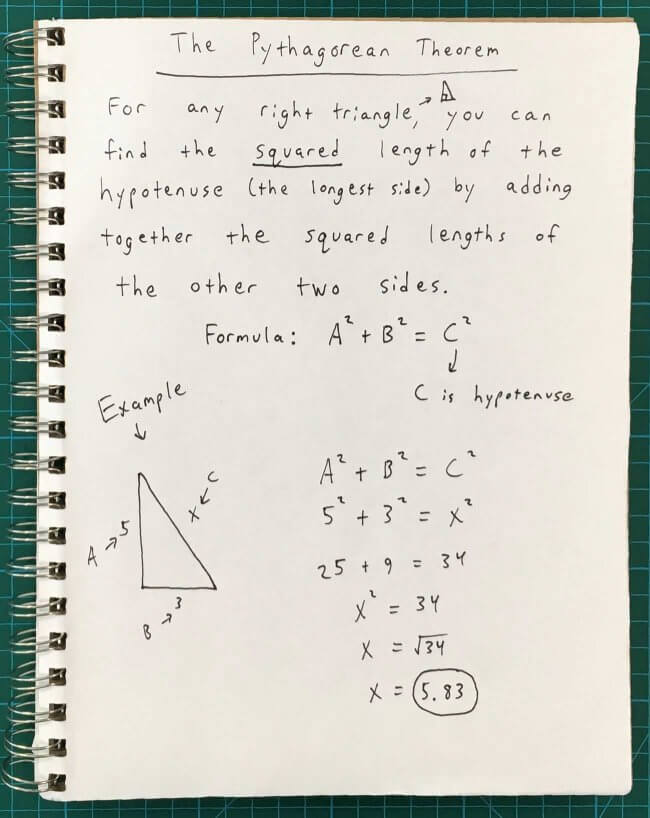
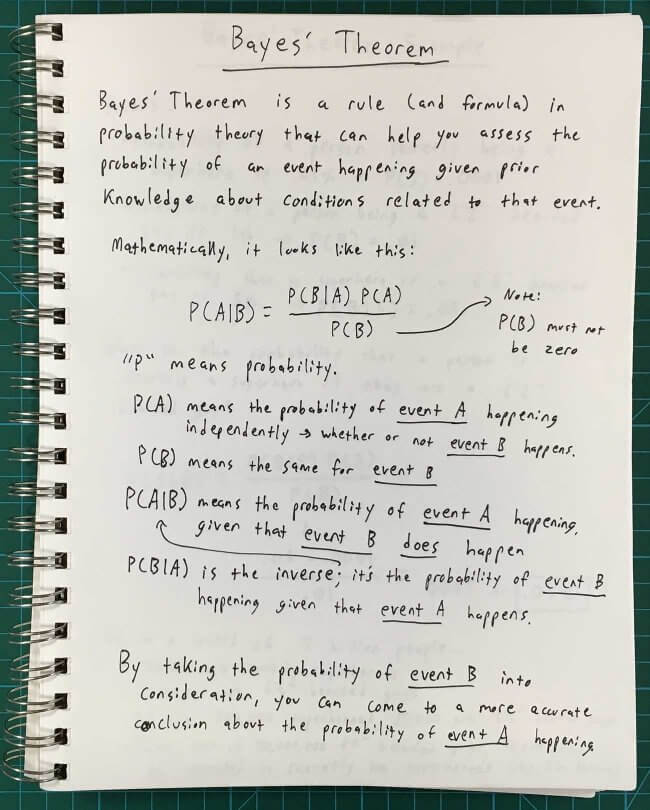
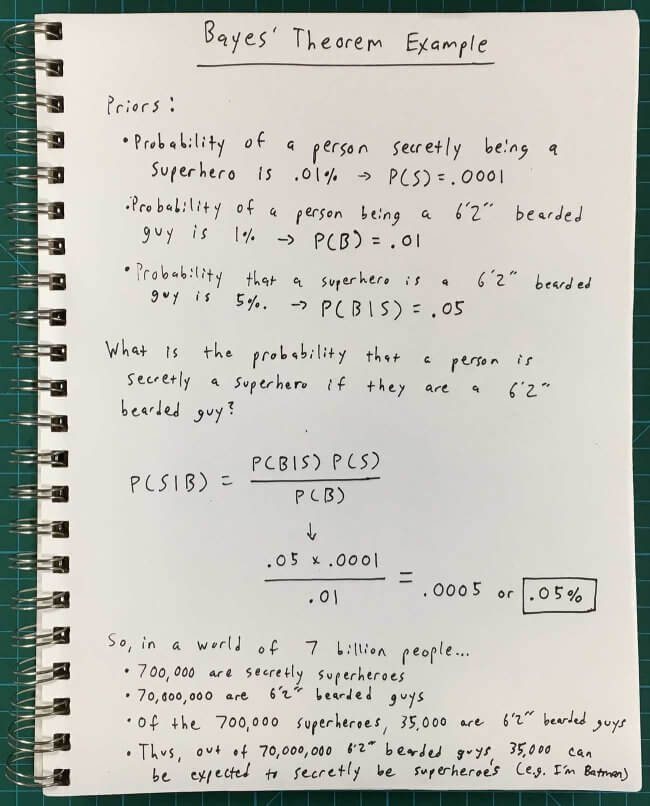
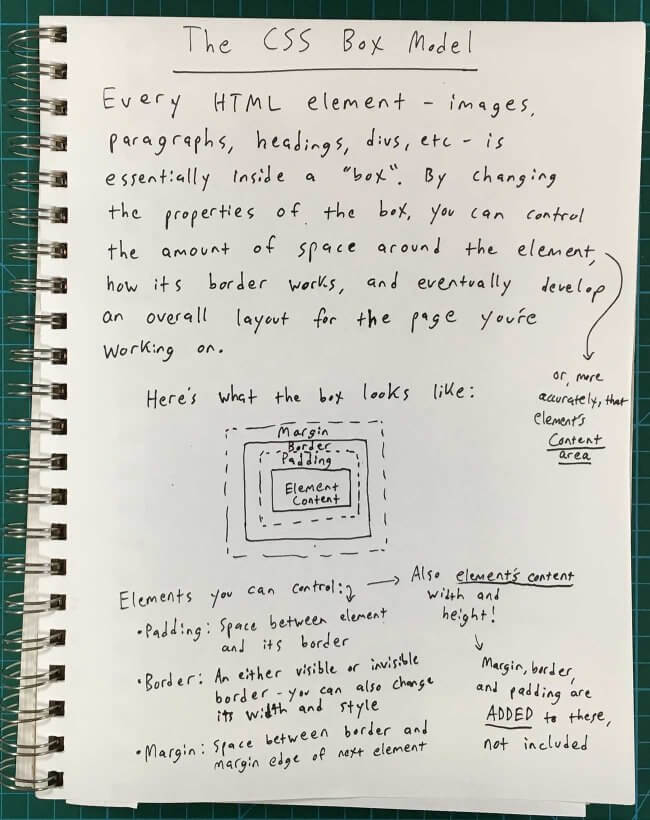

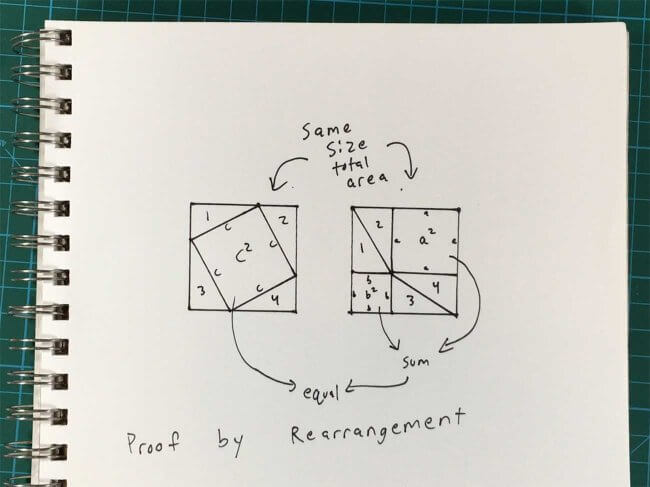

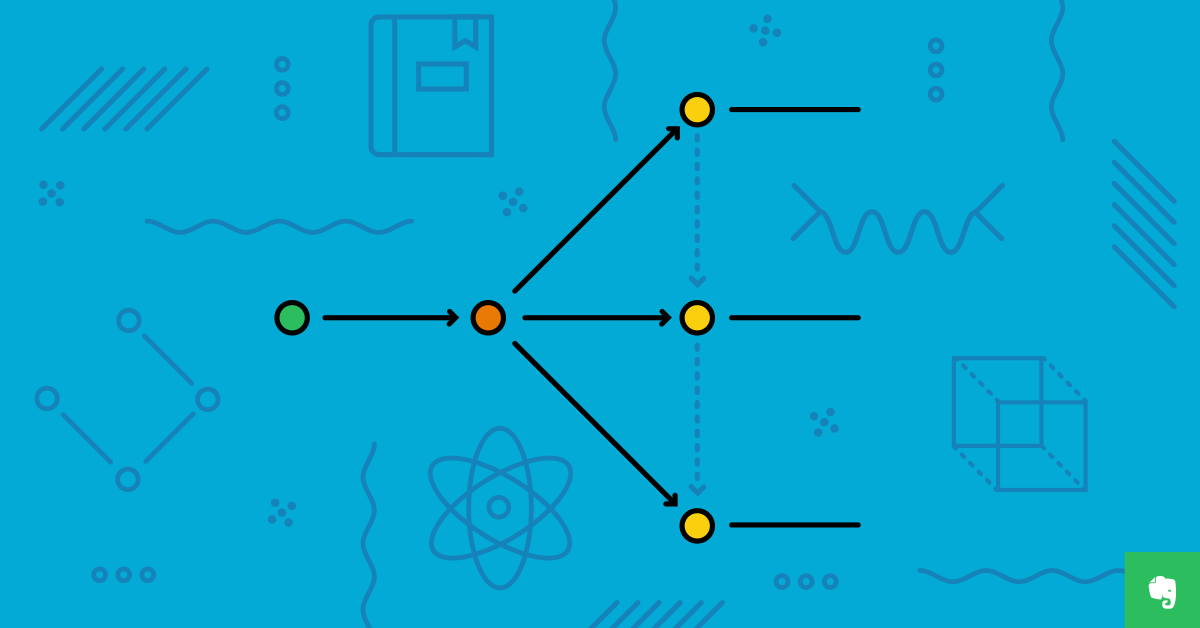
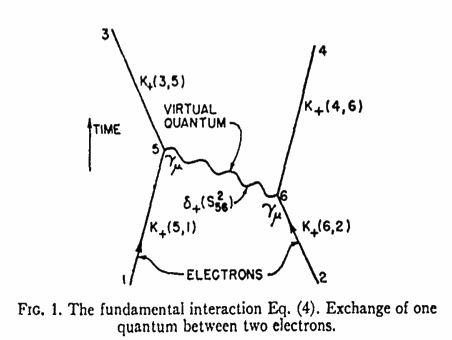

No hay comentarios:
Publicar un comentario